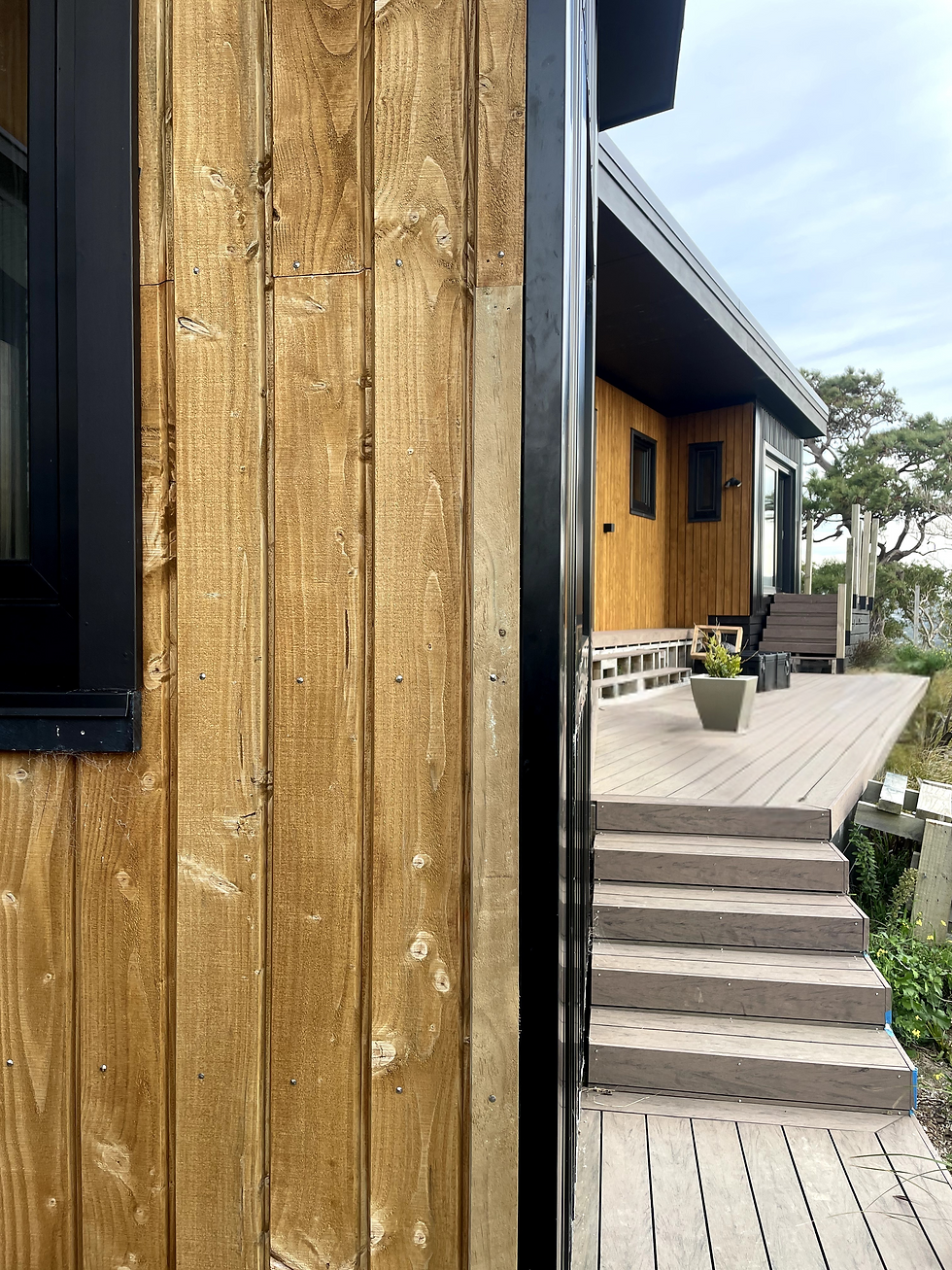Goodbye Asthma & Allergies: The 4 Factors that Contribute to Cleaner Air in SIP Homes
- Sheryl Sua
- Oct 25, 2023
- 4 min read

Wellington Builders | Design & Architecture Services | Eco-Friendly Design | High Performing Home | Structural Insulated Panels | Energy-Efficient Home
Asthma, hay fever, dust mites, and pet fur are some of the reasons why many New Zealanders struggle with breathing. As a nation, we are aware of the high asthma rates. However, what's surprising is that 30-40% of people in New Zealand suffer from allergies. This is a significant percentage of our population, and we need to address it. In the past, people had the attitude that allergies were not a big deal, and they would just toughen up. However, we now understand how severely allergies can impact some individuals.
Breathing is something we do naturally, but it's not that simple for many people. According to the Asthma Foundation of NZ, respiratory diseases affect over 700,000 people in our country. Although New Zealand is known for being "clean and green," the air we breathe is often not that clean.
We spend about 90% of our time indoors, so the air quality in our homes, workplaces, and schools is vital. Unfortunately, indoor air can be more polluted than outdoor air because pollutants can get trapped inside without proper ventilation. But New Zealand is slowly coming up to speed with initiatives that support improving indoor air quality. One such initiative is the use of SIP homes, which are one of the best ways to achieve this.
In this article, we will explain the four factors that contribute to cleaner air in SIP homes and thereby make them healthier for allergy sufferers and people with respiratory issues.
AIRTIGHT
SIP homes are built using insulated panels that are used for walls, floors, and ceilings. These panels (along with the tapes used) create an airtight seal, making it crucial to install a ventilation system for air circulation control. The ventilation system filters the incoming air to prevent any pollutants, dust, or contaminants from entering the house.
NO MOULD GROWTH
SIP homes use ventilation systems that have multiple benefits. These systems prevent the growth of mould, rot, and mildew by dehumidifying the air, which is possible due to the lack of cavities in the panels. They ensure that all dampness is removed from rooms like bathrooms, kitchens, and laundries, while simultaneously providing fresh air into living areas. This process is continuous, guaranteeing clean and fresh air around the clock.
NO HARMFUL CHEMICALS
It's important to note that homes that contain an excess of toxic chemicals in the air can worsen asthma and other respiratory symptoms. These harmful chemicals can come from materials such as glue, paint, varnish, and wood. However, SIP panels which are made of OSB board,, EPS or PUR, and adhesive, are free from such toxic chemicals. The foam core of SIP panels does not produce any off-gassing, and the OSB board contains only a minimal amount of urea formaldehyde, which is less than the amount present in our bodies.
CONSISTENT TEMPERATURE
Maintaining a consistent temperature is crucial for a comfortable, healthy home environment. In SIPs, this is achieved through a process in the ventilation system of transferring heat from the outgoing "stale" air to the incoming fresh air from outside.
Additionally, SIPs provide excellent insulation without as many thermal bridges. A thermal bridge is a part of a building’s envelope where the transfer of heat to the outside is increased by comparison to neighbouring areas. NB: Thermal bridges also have the effect of allowing colder exterior temperatures to enter the building during colder months and hotter exterior temperatures to enter the building during summer months).
A thermal bridge acts as a highway for heat to leave the building - straight for the outdoors. Heat loss near a thermal bridge is usually lower, resulting in a much more stable environment so the fewer bridges there are in a building the better its performance will be in all seasons. A timber-framed home has many thermal bridges – everywhere there is a stud or dwang in the structure, it creates a thermal bridge.
However, because SIPs are constructed of one continuous panel, the number of thermal bridges is way less and therefore, there is much less chance of heat loss. This results in a constant temperature throughout the house, regardless of the season. As a result, the house remains comfortably cool in summer and warm in winter, which can alleviate respiratory issues such as coughing caused by cold air, particularly during the evening.
Breathing freely is a fundamental human need that everyone should have access to. No one should have to endure unhealthy living conditions that can make it difficult to breathe. That's why we use SIPs in our construction and are optimistic about the future of New Zealand as we continue to build more sustainable and healthier homes.
SIPs are an excellent solution for Kiwis who struggle with asthma, hay fever, and other respiratory issues. By improving air quality, we can all breathe a little easier and enjoy a better quality of life.
For more about ventilation systems for SIPs, read this.
If this article has raised more questions, please get in touch with us. We would love to see how we can work together to get you into a healthier home!

.png)



Comments